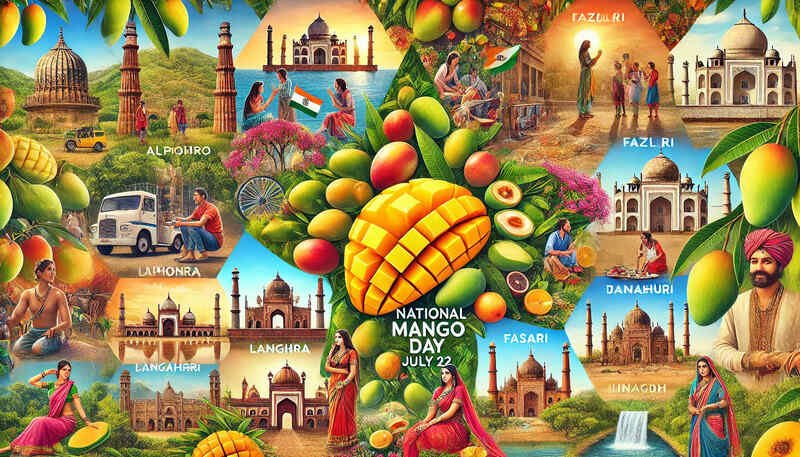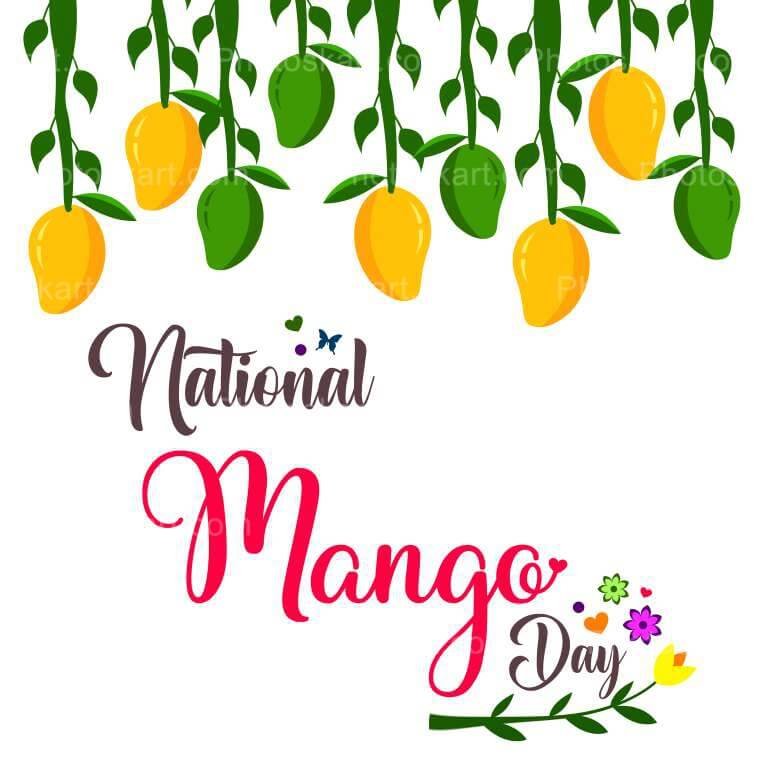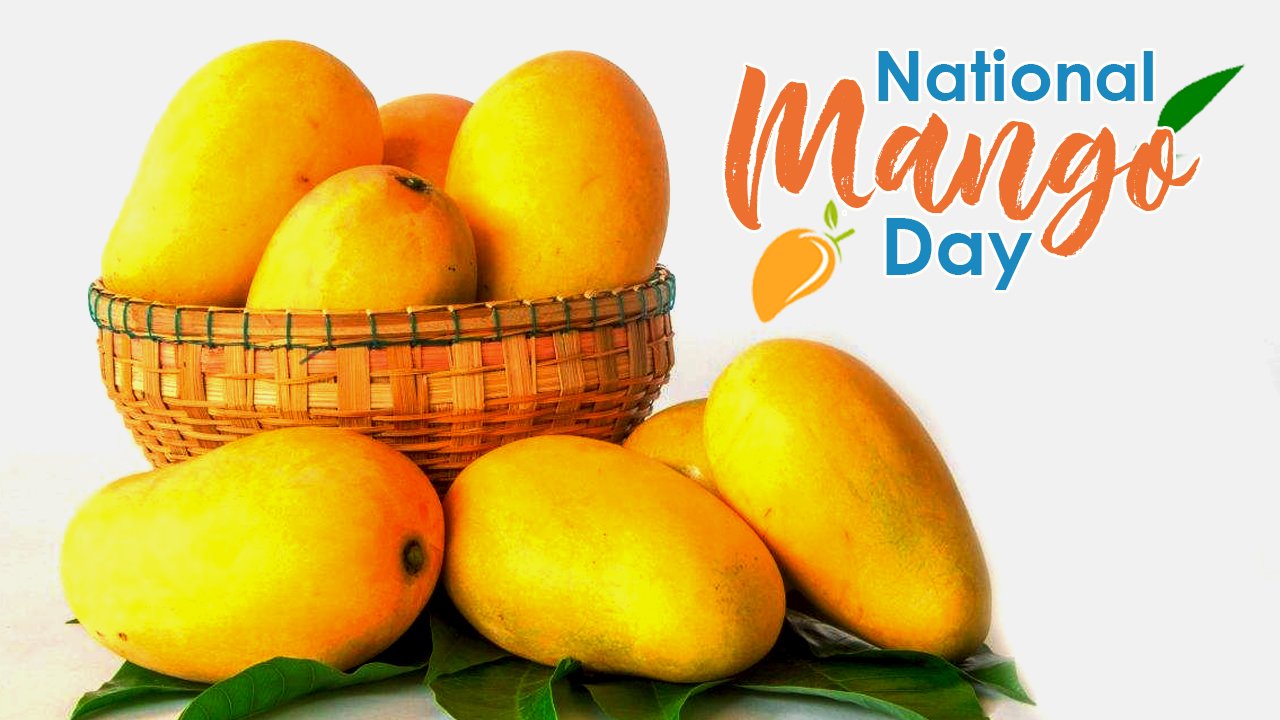Introduction
Mangoes are often called the “king of fruits,” and for good reason. Bursting with flavor and boasting a rich history, this tropical delight has captured hearts worldwide. As National Mango Day approaches, it’s time to delve into everything that makes mangoes special, from their origins and varieties to the cultural significance and culinary versatility they offer.
The Origins of Mangoes
Mangoes have a long and storied history, believed to have originated over 4,000 years ago in the Indian subcontinent. Ancient scripts and myths from India tell tales of mangoes, often associating them with love and prosperity. The fruit spread to other tropical regions, including Southeast Asia, Africa, and the Americas, thanks to early explorers and traders.
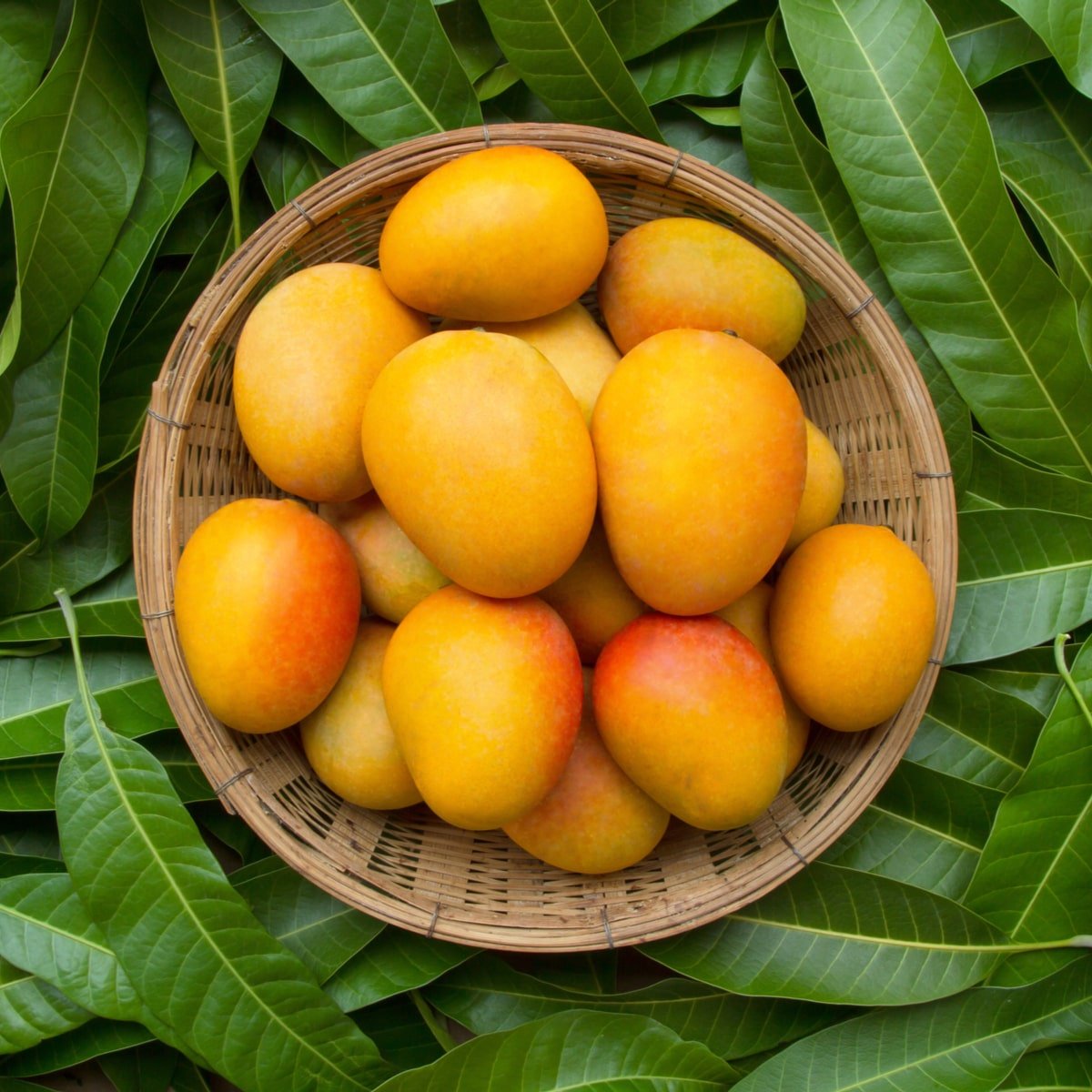
Varieties of Mangoes
One of the most fascinating aspects of mangoes is the sheer variety available. Each type has its own unique flavor, texture, and aroma. Some popular varieties include:
Alphonso: Known as the “king of mangoes,” Alphonso mangoes are cherish for their rich, creamy texture and sweet taste. They are predominantly grown in the Ratnagiri region of India.
Haden: This variety is one of the most common in the United States. It has a bright red skin with green and yellow accents, offering a sweet and slightly tangy flavor.
Tommy Atkins: Widely available in grocery stores, this variety is known for its long shelf life and fibrous flesh. It’s not as sweet as other types but is still highly popular.
Ataulfo: Also known as the “Honey” or “Champagne” mango, Ataulfo mangoes are small, golden-yellow, and very sweet with a buttery texture.
Cultural Significance
Mangoes hold a special place in many cultures, particularly in South Asia. In India, mangoes are not just a fruit but a symbol of love and fertility. During festivals like Holi and Diwali, mango leaves are use for decoration, symbolizing prosperity and good fortune.
In Southeast Asia, mangoes are often use in religious ceremonies and offerings. They are also a key ingredient in traditional dishes, such as Thai sticky rice with mango and Filipino mango floats.
Health Benefits of Mangoes
Mangoes are not only delicious but also packed with nutrients. They are an excellent source of vitamins A and C, which are essential for healthy skin and immune function. Mangoes also provide a good amount of dietary fiber, which aids in digestion.
Moreover, mangoes contain antioxidants like quercetin, astragalin, and gallic acid, which have anti-inflammatory properties. These antioxidants help protect the body against various diseases, including certain cancers.
Mangoes in Culinary Creations
One of the best ways to celebrate National Mango Day is by indulging in various mango-based dishes. From savory to sweet, mangoes can be use in countless culinary creations.
Mango Salsa: This fresh and vibrant salsa is perfect for summer. Combine diced mangoes with red onion, cilantro, lime juice, and a hint of jalapeño for a refreshing side dish.
Mango Smoothie: Blend fresh mango chunks with yogurt, a splash of orange juice, and a drizzle of honey for a creamy and nutritious smoothie.
Mangos Sticky Rice: A popular Thai dessert, mango sticky rice combines sweet coconut-flavored sticky rice with ripe mango slices, creating a delightful balance of flavors and textures.
Mangos Lassi: This traditional Indian drink is made by blending mango pulp with yogurt, milk, and a touch of cardamom. It’s a refreshing beverage perfect for hot days.
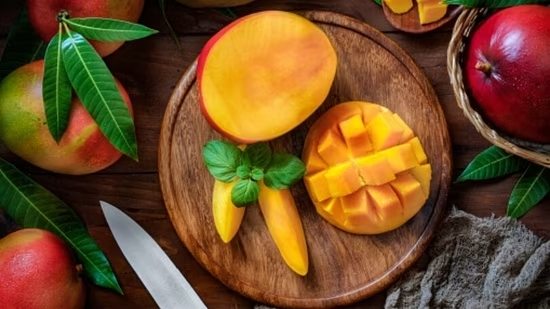
National Mango Day Celebrations
National Mango Day is the perfect opportunity to celebrate this beloved fruit. Whether you’re a fan of eating mangoes fresh, incorporating them into recipes, or learning about their cultural significance, there’s something for everyone.
Host a Mango Tasting Party: Gather different varieties of mangoes and have a tasting party with friends and family. Compare the flavors and textures of each type and vote on your favorite.
Cook Mango-Inspired Dishes: Spend the day experimenting with mango-based recipes. From appetizers to desserts, there’s no shortage of delicious dishes to try.
Learn About Mangoes: Take the time to learn more about the history and cultural significance of mangoes. You can read books, watch documentaries, or even visit a local farm that grows mangoes.
Spread the Love: Share your mango creations and knowledge on social media using the hashtag #NationalMangoDay. Encourage others to join in the celebration and discover the joy of mangoes.
Conclusion
As National Mango Day approaches, let’s take a moment to appreciate the incredible journey of the mango. From its ancient origins in the Indian subcontinent to its status as a beloved fruit worldwide, the mango’s rich history and cultural significance make it truly special. Whether you’re enjoying a fresh mango, experimenting with new recipes, or learning about its health benefits, there’s no better way to celebrate this day than by indulging in the king of fruits. So, grab a mango, savor its sweetness, and join the celebration!
Also Read:
FAQs
1. When is National Mango Day?
National Mango Day is celebrated on July 22nd every year.
2. What are some popular varieties of mangoes?
Some popular varieties of mangoes include Alphonso, Haden, Tommy Atkins, and Ataulfo.
3. Are mangoes healthy?
Yes, mangoes are pack with vitamins A and C, dietary fiber, and antioxidants, making them a nutritious fruit choice.
4. How can I celebrate National Mango Day?
You can celebrate by hosting a mango tasting party, cooking mango-inspired dishes, learning about mangoes, and sharing your celebrations on social media.
5. What are some traditional dishes made with mangoes?
Traditional dishes made with mangoes include mango salsa, mango sticky rice, mango lassi, and mango smoothies.
